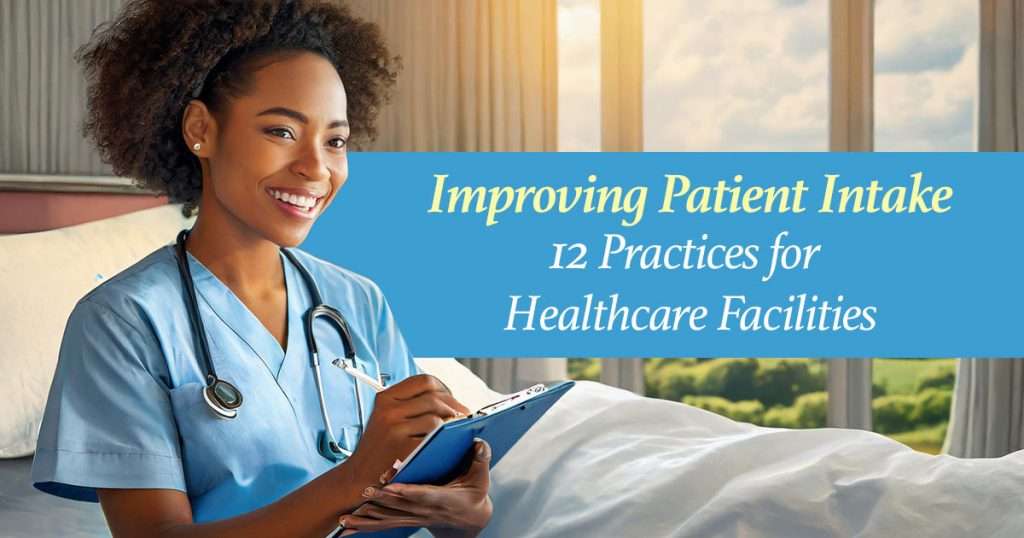Patient intake is a crucial first step in the healthcare journey. It helps healthcare professionals figure out what their patients need and make sure they get the right care. To widen your idea about what patient intake is, you need to learn its meaning in a medical context and find practices to improve the patient intake process in hospitals and clinics.
What is Patient Intake?
In simple terms, patient intake is the process of collecting important information from patients before they receive medical care. This includes several tasks, such as:
- Collecting personal information such as name, date of birth, and contact information.
- Recording medical history and current symptoms.
- Checking insurance and payment information.
- Asking patients to sign consent forms for treatment.
Surprisingly, 86% of mistakes in healthcare are due to administrative problems. These errors can lead to avoidable medical mistakes, which cause around 400,000 lives each year. The meaning of intake in the medical process is more than just paperwork; it shapes the patient’s whole experience at a healthcare facility. A smooth intake process helps healthcare providers gather all the necessary information to give the right care, reduce wait times, and improve patient satisfaction.
The Importance of the Patient Intake Process
A well-executed patient intake process in the hospital or healthcare setting is vital for various reasons:
- Improves Patient Care: A thorough patient intake process allows healthcare providers to tailor care plans to each patient, leading to better health outcomes.
- Enhances Communication: The intake process facilitates effective communication. Patients can share their symptoms and concerns, which aids in diagnosis and treatment.
- Saves Time: Simplifying the patient intake process minimizes wait times and improves the overall patient experience.
- Minimizes Errors: Accurate data collection during intake helps reduce mistakes related to medications, allergies, and treatments.
- Ensures Compliance: A thorough intake method makes sure that healthcare facilities follow the rules set by law and government.
Practices to Improve Patient Intake
To enhance the patient intake process, healthcare facilities can adopt several best practices. Here are twelve effective strategies:
1. Utilize Electronic Health Records (EHR)
Switching from paper forms to EHR systems can significantly improve patient intake. EHRs make it easier to enter and retrieve data, reducing paperwork and errors. They can also connect with other systems like billing and scheduling.
2. Incorporate Patient Engagement Software
Patient engagement software can streamline the intake process by allowing patients to fill out forms online and manage their appointments. This software enhances communication between patients and healthcare providers, ensuring that important information is shared promptly.
3. Simplify Forms and Documentation
Long intake forms can overwhelm patients. Simplifying these forms by reducing questions and using clear language makes the process easier. Focus on gathering only essential information.
4. Offer Online Pre-Registration
Let people fill out their forms online ahead of time before their meeting. This saves time and lets patients provide more accurate information comfortably. Online pre-registration streamlines the check-in process.
5. Train Staff Effectively
Well-trained staff are vital for a successful patient intake process. Spend money on training programs to teach staff how to help patients and how important it is to take in new patients. Ensure they know how to use EHR systems and patient engagement software while handling sensitive information.
6. Incorporate Mobile Access
Many patients prefer using smartphones for tasks like scheduling appointments and completing intake forms. Implement mobile-friendly solutions that allow patients to fill out forms and access their health information via mobile devices.
7. Use Visual Aids
Use visual aids, like infographics or videos, to help people understand how the intake process works. Clear visuals help patients understand what to expect and reduce anxiety for first-time visitors.
8. Implement a Triaging System
A triaging system helps prioritize patients based on their health needs. By assessing each patient’s situation during intake, healthcare providers can ensure that those needing immediate care receive it promptly.
9. Encourage Open Communication
Urge patients and staff to talk to each other openly. Encourage patients to ask questions and express concerns during the intake process. This approach builds trust and ensures patients feel heard.
10. Follow Up with Patients
After the initial intake, consider following up with patients to verify their information and address any concerns. This follow-up can be done through phone calls, emails, or texts, improving data accuracy and showing patients that the facility cares.
11. Collect Feedback
Ask people for feedback on their experience with intake regularly. To find out what works well and what needs to be changed, use surveys or idea boxes. A better eating experience can come from making changes based on what people say.
12. Ensure Data Security
Protecting patient information is crucial in the intake process. Protect sensitive data by putting in place strong data security measures. Ensure staff are trained in data privacy protocols and that the facility complies with relevant regulations, such as HIPAA in the U.S.
Strengthening Patient Intake Practices
Patient intake is an important first step in healthcare that helps ensure patients get the care they need. By gathering essential information and reducing mistakes, a successful intake process improves communication, saves time, and makes patients happier.
Healthcare facilities can make this process even better by using electronic health records, patient engagement software, and simpler forms, while also encouraging open communication. Focusing on a smooth patient intake experience helps create a positive environment for patients right from the beginning.

